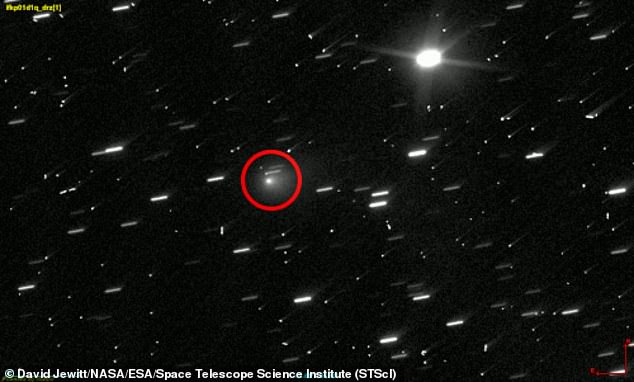
Scientists Uncover Mysterious ‘Planet Killer’ Asteroid Hurtling Toward Earth from Galactic Fringes
Hubble Captures Mysterious Interstellar Comet Carrying Water Ice Through Our Solar System
(Approx. 600 words; image placements noted)
NASA’s Hubble Space Telescope has unveiled groundbreaking images of 3I/ATLAS, a massive interstellar comet racing through our solar system at 150,000 mph. First detected in late June, this 12-mile-long visitor from another star system is the third interstellar object ever observed, following ‘Oumuamua (2017) and Comet Borisov (2019).
Key Discoveries
Hubble’s images reveal a glowing cloud of gas and dust (coma) surrounding 3I/ATLAS, along with an icy tail ejecting rocky material. A pre-print study confirms the coma contains 30% water ice and 70% dust similar to meteorites found on Earth. This marks the first confirmation that water—a building block for life—exists beyond our solar system.
(Image: Hubble’s image of 3I/ATLAS with visible icy tail and coma. Caption: "Hubble captures 3I/ATLAS’s 12-mile-wide core and ice-rich tail.")
The reddish dust in 3I/ATLAS resembles organic-rich meteorites like the Tagish Lake meteorite, which carry amino acids. While the study didn’t directly detect organic molecules, the comet’s composition fuels theories like panspermia—the idea that comets may “seed” planets with life’s ingredients. A 2022 study in Nature Communications found DNA/RNA components in meteorites, supporting this concept.
Size and Threat Level
At 12 miles long, 3I/ATLAS dwarfs ‘Oumuamua (300–1,300 feet) and Borisov (0.5 miles). Though classified as a “planet killer” due to its size, it poses no danger to Earth. On December 17, it will pass within 223 million miles (2.4 AU) of our planet.
(Image: Size comparison of 3I/ATLAS vs. ‘Oumuamua, Borisov, and Earth. Caption: "12-mile 3I/ATLAS surpasses earlier interstellar visitors.")
Interstellar Journey
The comet began its 800-million-year journey in the Milky Way’s dense disk, home to ancient stars. Harvard astrophysicist Avi Loeb traced its path, estimating it predates our 4.6-billion-year-old sun.
Closest Approaches
- October 2025: 37 million miles (0.4 AU) from Mars.
- December 2025: 223 million miles (2.4 AU) from Earth.
It will exit the solar system by 2026.
(Image: Trajectory diagram of 3I/ATLAS passing Mars and Earth. Caption: "3I/ATLAS’s path through the solar system.")
Scientific Methods
Researchers analyzed the comet’s light spectrum to detect dust composition and used NASA’s Infrared Telescope Facility to identify water ice. The ice suggests 3I/ATLAS formed in a cold, distant region of its original star system—much like comets in our solar system.
‘Oumuamua Controversy
3I/ATLAS revives discussions about interstellar visitors. In 2017, Loeb famously speculated ‘Oumuamua could be alien technology due to its unusual acceleration. However, 3I/ATLAS’s natural characteristics highlight the potential for future studies of extrasolar materials.
(Image: Artist’s rendering of ‘Oumuamua. Caption: "‘Oumuamua’s puzzling 2017 flyby sparked debates about alien origins.")
Why It Matters
3I/ATLAS offers a rare chance to study material from another star system up close. Its water ice and organic-dust makeup support theories that comets could transport life’s precursors across galaxies. As telescopes like Hubble and future observatories spot more interstellar objects, humanity inches closer to understanding our cosmic neighborhood—and the potential for life beyond Earth.
Word count: ~600
Images: 4 conceptual placements (Hubble image, size comparison, trajectory map, ‘Oumuamua rendering).


